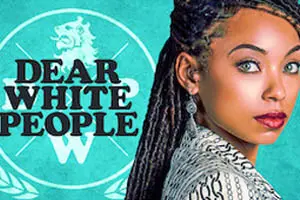How Netflix became a leader in Black content as the rest of Hollywood scrambles to catch up
-

Amid the George Floyd protests on June 10, Netflix released a "Black Lives Matter" collection of 56 shows, films and documentaries. Meanwhile, "Hollywood is scrambling, in its traditional way — late, liberal, a bit ham-handed — to catch up with this cultural moment," says Ben Smith. Ava DuVernay, who's made a number of Netflix projects including the acclaimed When They See Us, calls the streaming service “the foremost and most robust distributor of Black images in the world," adding: “Netflix doesn’t have to trot out the one or two things, but it has a library that’s a wide cross section of taste and content that speaks to the understating of that audience." As Smith points out, "in looking to Black audiences, the young Netflix was following an old pattern in the television business. In the 1990s, Fox and UPN built their networks with shows like In Living Color and Malcolm & Eddie. The year after Orange Is the New Black became a hit, Netflix began talking to (Justin) Simien about turning his film Dear White People into a show that would be a pioneer in a now-familiar genre, which Mr. Simien described as 'an ensemble of Black articulate millennial activists in a world of white people.' Now, he said, 'that’s everywhere, pointing to Atlanta, Insecure and Mixed-ish. But when he signed with Netflix in 2015, 'this show as a whole couldn’t have existed in any other place.'" Simien attributes the show’s place at Netflix to a Black executive there, Tara Duncan. “It’s the classic thing of — you just have Black people working at your company,” says Simien. As Smith reports, "in the summer of 2015, Black employees at Netflix produced a memo and PowerPoint presentation to make the case that the company was missing an opportunity with Black audiences. They argued in the documents, which I obtained, that Netflix risked missing a boom defined by Empire at Fox and Black-ish and How to Get Away with Murder on ABC. At the time, the memo estimated, only about two million Black households were subscribing to Netflix — 5 percent of its total subscribers. It said that Black households were a $1.4 billion revenue opportunity and that few of Netflix’s top 100 shows, popular across other groups, were resonating with Black audiences. The memo cited 'the (lack of) depth in our Black content catalog,' and said Netflix was spending more money on programming for British people and anime fans than for Black Americans. They made their arguments to (Netflix chief content officer Ted) Sarandos and his team in a conference room full of executives in the second half of 2015, two people who were there said. Crucially, they showed statistics suggesting that licensed Black content was, in the company’s terminology, 'efficient,' meaning that it was driving above-average viewership for every dollar spent." In recent years, Netflix has brought in former ABC Entertainment president Channing Dungey, the first Black woman to lead a major network. Netflix also signed Shonda Rhimes and Kenya Barris, the best known Black showrunners in the country, to lucrative production deals, as well as Barack and Michelle Obama.
TOPICS: Dear White People, Netflix, When They See Us, Ava DuVernay, Channing Dungey, George Floyd, Justin Simien, Kenya Barris, Shonda Rhimes, Tara Duncan, Ted Sarandos, African Americans and TV, Black Lives Matter
More Dear White People on Primetimer:- Dear White People executive producer Jaclyn Moore says she's "done" with Netflix over Dave Chappelle's transphobic jokes
- Dear White People strayed too far from its original concept in its last two seasons
- Dear White People creator initially fought against including 'NSYNC's "Bye Bye Bye" in the 1990s musical final season
- Dear White People reality TV parody "Big House" crowns a Black winner as Big Brother prepares to do the same in real life
